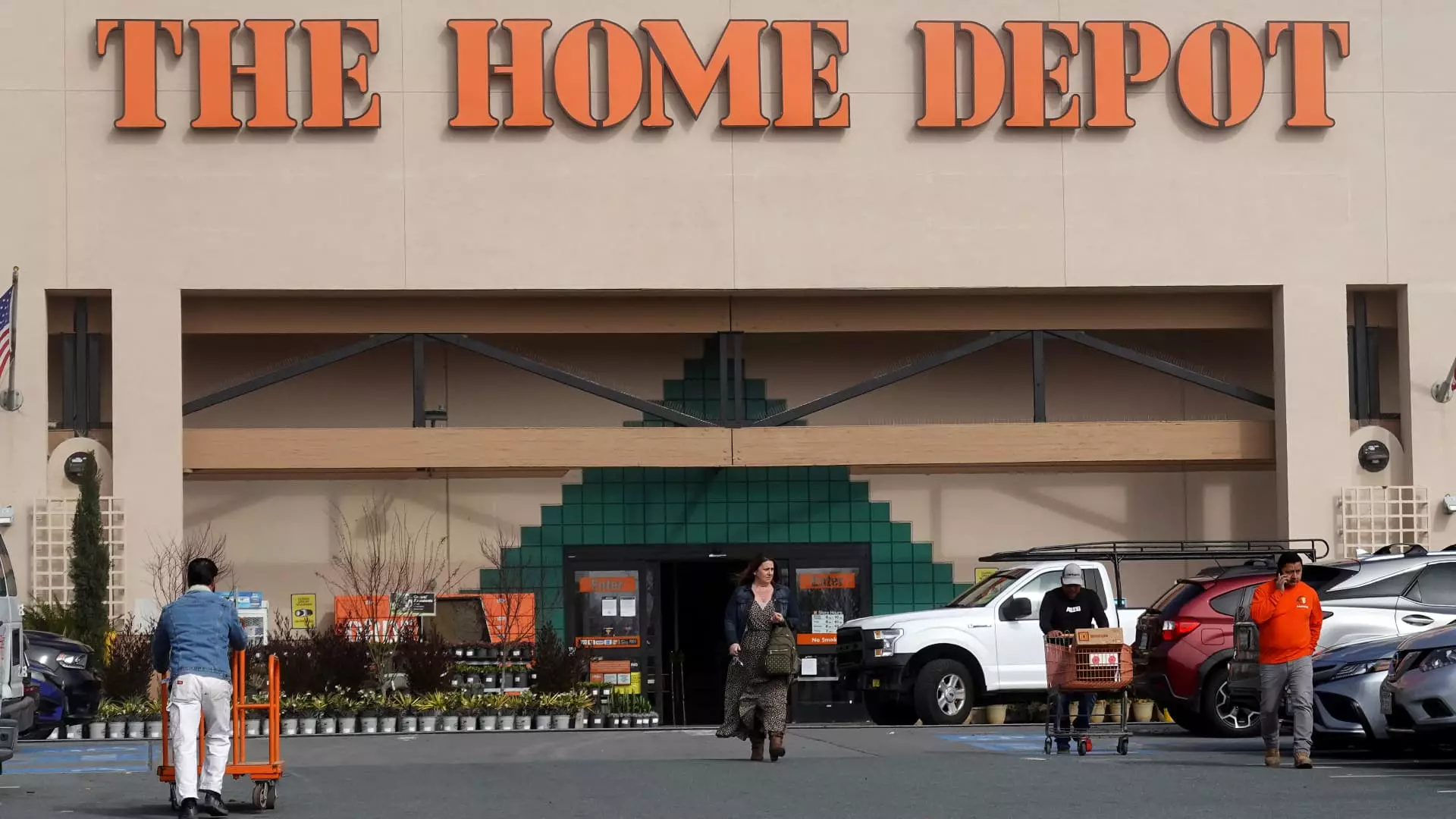As the chill of winter fades, retailers like Home Depot experience a pivotal moment that marks the beginning of their most lucrative season. Jim Cramer affectionately refers to this period as “Christmas” for home improvement outlets—an analogy that emphasizes the importance of the Memorial Day outdoor sales event. Kicking off a series of significant sales and promotions, Home Depot capitalizes on the seasonal enthusiasm for gardening and outdoor projects, with discounts on everything from vibrant plants to expansive patio furniture. The urgency to engage customers isn’t just about offers; it’s a calculated move to harness the consumer’s instinct to spruce up their homes as temperatures rise.
In fiscal year 2024, Home Depot revealed that indoor and outdoor gardening sales reached an impressive $20.83 billion, a modest uptick from the previous year but a staggering reflection of consumer behavior during the warm months. Interestingly, these garden-related sales represent about 13% of the company’s total sales, dwarfing the contributions from lumber and paint. This revelation underscores the point that Home Depot is in the business of more than just tools—it’s fostering a culture where home improvement is intertwined with lifestyle choices and seasonal activities.
Uncertainty Looming: Financial Forecasts and Market Conditions
However, as promising as the current sales strategies may appear, several clouded windows suggest that Home Depot isn’t entirely out of the woods. The company is entering its second-quarter reporting period with a blend of optimism and caution. Expected revenue growth of 5.3% year-over-year, reaching $45.48 billion, sounds promising. Yet, the looming specter of economic uncertainty—fueled by tariff complications and stubbornly high mortgage rates—creates a dual-edged sword for investors and company executives alike.
The reluctance of consumers to engage in substantial home improvement projects due to economic conditions introduces an inherent risk in Home Depot’s forecasts. Bernstein analysts have pointed out the convergence of “unfavorable weather, weak consumer sentiment, and mixed performance from peers” as essential elements that could complicate the company’s first-quarter earnings. An anticipated revenue of $39.3 billion, while reflecting an 8% increase year-over-year, could ultimately be a fluke if home buying does not regain momentum in light of elevated mortgage rates.
Housing Market Turbulence: A Double-Edged Sword
Mortgage rates hovering just below 7% add another layer to this complex situation. Although there’s some positive movement in home loan demand, any growth is precarious given the current economic climate. As industry sentiments shift toward more significant projects—gleaned from a Morgan Stanley survey of contractors—it’s essential to tread carefully. The intended rate cuts from the Federal Reserve could offer an uptick in housing market activity but remain speculative at best.
Jim Cramer has suggested that a decrease in mortgage rates to below 6.5% is crucial for rekindling the housing market’s vigor. These projected shifts in mortgage rates correlate directly to Home Depot’s overarching success; the retailer’s narrative is tightly woven with that of the housing sector.
Looking Forward: Navigating Tariff Challenges
Compounding the pressure are the ongoing tariff discussions that could surge or subside unpredictably. While analysts suggest a potential moderation in tariff impacts could lead to recovery, the uncertainty remains stifling. Home Depot CEO Ted Decker remains steadfast, asserting that the company will navigate through these turbulent quicksand-like scenarios with resilience. Jim Cramer might argue that this perseverance, even against contrary trends, is a testament to Home Depot’s strength.
Despite these trials, Home Depot’s stock valuation has not fared well in the year to date, slipping approximately 2.5%, trailing behind a moderate gain in the S&P 500. This divergence raises eyebrows. A mere 12% distance from its historical highs signifies that what was once a stellar trajectory is now peppered with doubt and potential underperformance.
The Future of Home Depot: A Balancing Act
Analysis of Home Depot’s dual dependence on economic conditions and consumer behavior reveals a precarious balancing act. While the retailer is capable of remarkable sales figures during outdoor-centric seasons, its future rests unpredictably on the housing market’s revival and tariff resolutions. The path ahead is riddled with potential potholes, and allowing external complexities to dictate performance could jeopardize its standing in a fiercely competitive landscape.
To thrive, Home Depot must not only lean into seasonal sales opportunities but also craft strategies that empower its core consumers against a backdrop of economic unease. For investors, engaging with Home Depot isn’t merely about immediate gains; it requires belief in the company’s long-standing adaptability and foresight to weather financial storms while nurturing the spirit of home improvement.

